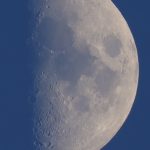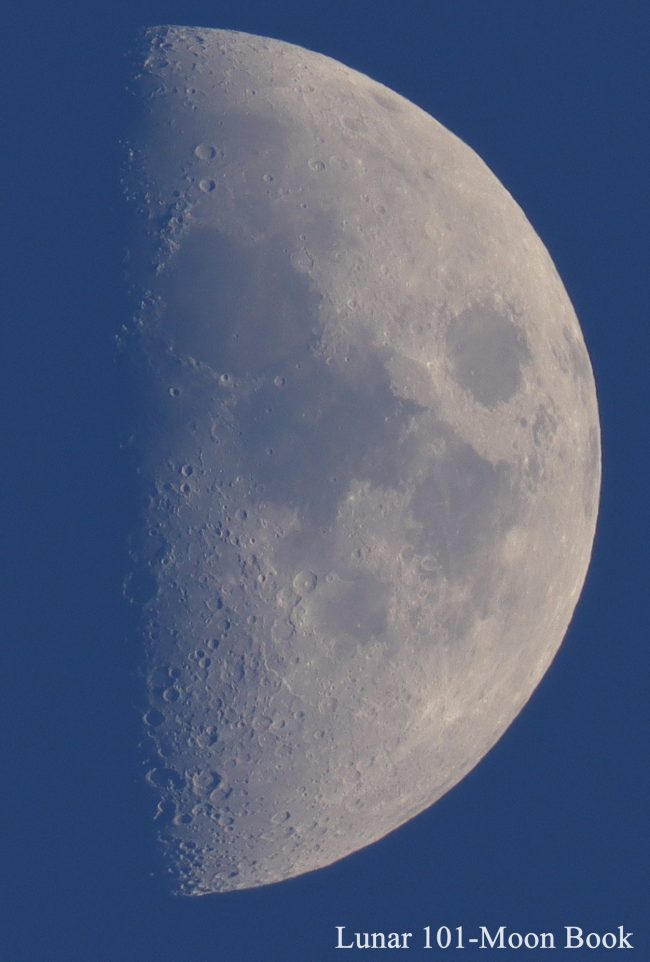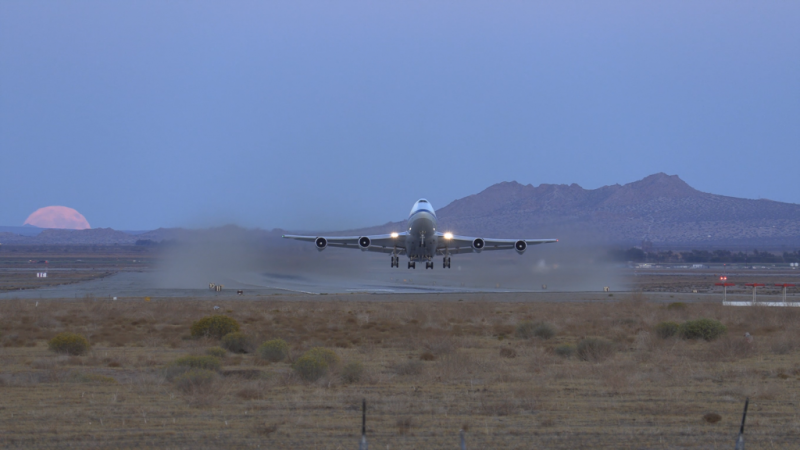

View at EarthSky Community Photos. | Steven Arthur Sweet of Toronto, Ontario, Canada captured the moon just past 1st quarter on October 23, 2020. See more of Steven’s work at Lunar 101 Moon Book.
NASA wants you to get excited about the moon — or more specifically, about a mysterious new science result the agency plans to unveil via a news conference on Monday, October 26 2020. Tune in here.
More details are expected to be announced during the news conference scheduled for 12 p.m. Eastern Daylight Time (16 UTC) that afternoon. A NASA statement promoting the news conference promises “an exciting new discovery about the moon” and references the agency’s ambitious Artemis program, which aims to land astronauts at the moon’s south pole in the year 2024.
What could it be? It’s possible the announcement relates to water ice around the moon’s south pole, considered a possible future resource for astronauts on the moon. Scientists have also predicted that – beneath the surfaces of Mars, Venus and our own moon – there are majestic volcanic caves, or lava tubes, formed by flowing magma and covered in tiny crystals. These lunar caves could provide shelter for future lunar explorers, and NASA has been testing an exploratory cave rover toward that end.
The announcement also relates to an airborne observatory, called the Stratospheric Observatory for Infrared Astronomy, aka SOFIA. The observatory rides aboard a German-American aircraft that made its first flight in 2007. The telescope itself saw first light in 2010.
SOFIA is an infrared telescope packed aboard a modified 747 jet plane that carries its instruments up above most of Earth’s atmosphere, which offers some unique advantages. Earth’s atmosphere is both turbulent and turbid. For example, only radio and visible light pass easily through the different atmospheric layers, meaning that other wavelengths of light, such as infrared, are not easily captured using ground-based cameras. Infrared light, in particular, is absorbed at many wavelengths by water vapor in the Earth’s atmosphere, so most infrared telescopes are at high elevations in dry places, above as much of the atmosphere as possible. SOFIA’s instruments focus on infrared light, studying objects in our own solar system and beyond.
Unlike infrared telescopes in space – such as the Spitzer Space Telescope and the Herschel Space Observatory (both now retired) – SOFIA is relatively easy to upgrade since it returns routinely back to Earth, where it’s operated and maintained as necessary at NASA’s Armstrong Flight Research Center in Palmdale, California. Each of the observatory’s flights last approximately 10 hours. SOPHIA was grounded in mid-March 2020, due to the COVID-19 pandemic, and only began flying again in mid-August, according to NASA statements. SOFIA has also struggled in the budgetary process over the past decade, as presidential budget requests have repeatedly selected the project for cancellation; Congress has reinstated it each time.
Naseem Rangwala, project scientist for the SOFIA mission at NASA’s Ames Research Center in California, will be one of four speakers during Monday’s news conference. She’ll be joined by Paul Hertz, who leads NASA’s astrophysics division; and Jacob Bleacher, a chief exploration scientist; and Casey Honniball, an astronomy postdoctoral fellow.
Revisit this page on Monday for updated coverage on NASA’s new moon discovery!

The SOFIA aircraft preparing for takeoff. Image by NASA.
Bottom line: NASA wants you to get excited about a mysterious new science result the agency plans to unveil via a news conference on Monday, October 26 2020; the discovery comes from the Stratospheric Observatory for Infrared Astronomy also known as SOFIA.
from EarthSky https://ift.tt/31yR6Af


View at EarthSky Community Photos. | Steven Arthur Sweet of Toronto, Ontario, Canada captured the moon just past 1st quarter on October 23, 2020. See more of Steven’s work at Lunar 101 Moon Book.
NASA wants you to get excited about the moon — or more specifically, about a mysterious new science result the agency plans to unveil via a news conference on Monday, October 26 2020. Tune in here.
More details are expected to be announced during the news conference scheduled for 12 p.m. Eastern Daylight Time (16 UTC) that afternoon. A NASA statement promoting the news conference promises “an exciting new discovery about the moon” and references the agency’s ambitious Artemis program, which aims to land astronauts at the moon’s south pole in the year 2024.
What could it be? It’s possible the announcement relates to water ice around the moon’s south pole, considered a possible future resource for astronauts on the moon. Scientists have also predicted that – beneath the surfaces of Mars, Venus and our own moon – there are majestic volcanic caves, or lava tubes, formed by flowing magma and covered in tiny crystals. These lunar caves could provide shelter for future lunar explorers, and NASA has been testing an exploratory cave rover toward that end.
The announcement also relates to an airborne observatory, called the Stratospheric Observatory for Infrared Astronomy, aka SOFIA. The observatory rides aboard a German-American aircraft that made its first flight in 2007. The telescope itself saw first light in 2010.
SOFIA is an infrared telescope packed aboard a modified 747 jet plane that carries its instruments up above most of Earth’s atmosphere, which offers some unique advantages. Earth’s atmosphere is both turbulent and turbid. For example, only radio and visible light pass easily through the different atmospheric layers, meaning that other wavelengths of light, such as infrared, are not easily captured using ground-based cameras. Infrared light, in particular, is absorbed at many wavelengths by water vapor in the Earth’s atmosphere, so most infrared telescopes are at high elevations in dry places, above as much of the atmosphere as possible. SOFIA’s instruments focus on infrared light, studying objects in our own solar system and beyond.
Unlike infrared telescopes in space – such as the Spitzer Space Telescope and the Herschel Space Observatory (both now retired) – SOFIA is relatively easy to upgrade since it returns routinely back to Earth, where it’s operated and maintained as necessary at NASA’s Armstrong Flight Research Center in Palmdale, California. Each of the observatory’s flights last approximately 10 hours. SOPHIA was grounded in mid-March 2020, due to the COVID-19 pandemic, and only began flying again in mid-August, according to NASA statements. SOFIA has also struggled in the budgetary process over the past decade, as presidential budget requests have repeatedly selected the project for cancellation; Congress has reinstated it each time.
Naseem Rangwala, project scientist for the SOFIA mission at NASA’s Ames Research Center in California, will be one of four speakers during Monday’s news conference. She’ll be joined by Paul Hertz, who leads NASA’s astrophysics division; and Jacob Bleacher, a chief exploration scientist; and Casey Honniball, an astronomy postdoctoral fellow.
Revisit this page on Monday for updated coverage on NASA’s new moon discovery!

The SOFIA aircraft preparing for takeoff. Image by NASA.
Bottom line: NASA wants you to get excited about a mysterious new science result the agency plans to unveil via a news conference on Monday, October 26 2020; the discovery comes from the Stratospheric Observatory for Infrared Astronomy also known as SOFIA.
from EarthSky https://ift.tt/31yR6Af

Aucun commentaire:
Enregistrer un commentaire